It's all about the classical music composers and their works from the last 400 years and much more about music. Hier erfahren Sie alles über die klassischen Komponisten und ihre Meisterwerke der letzten vierhundert Jahre und vieles mehr über Klassische Musik.
Total Pageviews
Sunday, May 25, 2025
Jed Distler's Cliburn Blog No 3: New Voices and Familiar Faces
Jed Distler's Cliburn Blog No 3: New Voices and Familiar Faces
Jed Distler
Saturday, May 24, 2025
'Not one note fell under the table, not one phrase emerged without meaning'. Jed Distler finds at least one marvellous set in today's Cliburn Competition Preliminaries

Many Cliburn candidates have a history of shuttling from one competition to another. Not all of them rack up first prizes, but they gain considerable mileage along the way, making contacts and landing further opportunities for exposure. Some have a knack for cultivating a strong social media presence, or forging a so-called ‘brand’ for themselves. Indeed, quite a few of the 28 pianists we’ve heard during the Preliminaries have their own YouTube channels.
The American pianist Evren Ozel opened Friday’s events. I hadn’t heard him since he participated in the 2021 International Warsaw Chopin Competition, but he’s clearly evolved since then, as witness his ebullient Bach Partita No 5. Ozel played Rachtime very well, if not so arrestingly as others. In contrast to Mikhail Kambarov’s overwrought Rachmaninov Corelli Variations, Ozel proved a smooth and forthright operator. His was not a deep, soul searching rendition, yet the pianist’s unified tempo relationships and top-to-bottom clarity made their mark.
Watch Evren Ozel's performance:
Having won 2024’s Seoul International Music Competition, 28-year-old Sung Ho Yoo’s mature mastery came as no surprise. Yoo’s Haydn Andante and Variations in F minor, Hob.XVII:6, amounted to a masterclass in divining the right tempos, creating character and contrast, and not sweating the small stuff. I’m glad that Yoo chose Unsuk Chin’s inventive Etude No 2 (‘Sequenzen’) to showcase his considerable new-music affinity. Following a confident and colourful Rachtime, Rachmaninov’s Second Sonata (the 1931 revision) simply soared through Yoo’s cogent textural layering, impeccable transitions, gorgeous sonority and healthy exuberance. The word ‘generous’ kept coming to mind, as did memories of Van Cliburn’s similarly sane, big-boned live Moscow recording issued by RCA. Obviously that’s a compliment!
Sung Ho Yoo:
More world-class Rachmaninov was in store at the start of Chaeyoung Park’s marvellous set. What sexy chromatic passagework in the G major Prelude, Op 32 No 5. What pearly throughout the G sharp minor, Op 32 No 12. While Park read Rachtime from an iPad, her reading sounded memorised, deeply considered and patiently detailed, even if it didn’t pursue dynamic extremes. It takes a special pianist to sustain one’s undivided attention in Prokofiev’s long and often elusive Eighth Sonata, and Park is exactly that kind of artist. Not one note fell under the table, not one phrase emerged without meaning. Try to catch this performance as archived on The Cliburn’s YouTube channel, because its beauties are easier to hear than for me to describe, although I can attest to Park’s note-to-note continuity and ingenuous use of the pedal. Incidentally, if you’ve seen Park’s brilliant performance during the 2023 Arthur Rubinstein Competition’s second stage of Beethoven’s mighty ‘Hammerklavier’ Sonata, you’ll want to hear it again when she plays it next week, should she advance to the Semi-finals. Keep your fingers crossed.
Chaeyoung Park:
Spanish pianist Pedro López Salas came to my attention through the Keyboard Charitable Trust. Last year my colleague Christopher Axworthy praised Salas’s Mozart C major Sonata, K330, for its ‘subtle rubato and delectable ornaments’, and those words rang true today regarding the pianist’s opening salvo. Ginastera’s First Sonata seems to be Salas’s competition calling card; it prominently figured during the 12th International Paderewski Piano Competition, where the pianist garnered second prize. True to form, Salas brought stylish ‘swing’ to the first movement, and tossed of the second movement’s rapid unison lines with off-handed ease.
Pedro López Salas:
I liked 25-year-old Japanese pianist Kotaro Shigemori’s fluid ‘walking’ tempo for Chopin’s E major Nocturne, Op 62 No 2, plus the controlled passion and overall elegance of his Scriabin Sonata No 2. He had no trouble at all with Rachtime’s notes, yet he didn’t let the music breathe in the opening section. Conversely, in Liszt’s Dante Sonata the contrasts between stormy Hell and expansive Heaven came to life through his mindful virtuosity. Kotaro Shigemori was a new name for me, and I look forward to hearing more from him.
Kotaro Shigemori:
By contrast, I met Elia Cecino a few years ago when we both were performing at Cremona Mondomusica, and I attended his superb New York recital debut back in February 2024. So I was happy to see and hear him again in this context. He displayed ambidextrous agility in Shostakovich’s B flat major Prelude from Op 87, and razor-sharp point in the Fugue, which ever-so-slightly slowed down as it progressed (this happens in all live performances of this piece that I’ve heard, and is nothing to worry about!). With iPad at the ready, Cecino threw himself into Rachtime, where the piece took on a kinetic and fresh improvisatory dimension. It’s curious why one rarely hears Beethoven’s G major Sonata, Op 31 No 1, as a separate entity in recital, whereas one often hears its more popular D minor and E flat major companions. One reason may be its arguably overlong and difficult-to-sustain slow movement. Here, however, Cecino’s animated basic tempo and shapely right-hand cantabile phrasing consistently held my interest. His Gounod/Liszt Faust Waltz took off like a rocket, where tempo fluctuations and mood swings seemed less calculated and superimposed than organically generated, springing from a genuine musical impulse. Such daring Liszt playing is most welcome and sorely needed these days.
Elia Cecino:
Friday’s events concluded with two returnees from the 2022 Cliburn. I didn’t warm to Yangrui Cai back then, and I still find his accomplished and proficient pianism cold and charmless. His machine-like Fugue in the Bach D major Toccata, BWV912, seemed flat and machine-like next to Magdalene Ho’s living, breathing dance. The challenges throughout Carl Vine’s Five Bagatelles pose absolutely no problems for Cai’s finished technique, nor do the orchestral fireworks in the Wagner/Liszt Tannhäuser Overture transcription, where he banged his way through the final pages. He played Rachtime from memory, nailing down every note with the utmost assurance.
Yangrui Cai:
On the other hand, the Israeli/Russian Vitaly Starikov’s coloristic and expressive resources have blossomed since 2022. He coaxed beautiful and meaningful sounds from the piano in Bach’s F sharp minor Toccata, BWV910, and put a kinder, gentler face on Rachtime. One should ideally feel the outer sections of Chopin Fourth Scherzo in one long beat to a bar, and that’s how Starikov’s deliciously fleet and feathery performance transpired. The genial atmosphere Starikov had created thus far then changed on a dime with a terse and appropriately grim rendition of Shostakovich’s First Sonata.
Vitaly Starikov:
Perusing the list of 18 candidates who have progressed to the Quarter-finals, my impression is that the jury have mostly chosen well. However, I say ‘mostly’ because I am disappointed, enraged even, that Magdalene Ho didn’t make the cut. But then again, The Cliburn has a history of occasionally letting geniuses slip through the cracks. Remember 1977 and Youri Egorov? Nevertheless, I look forward greatly to the Quarter-finals, which start without a break. More tomorrow!
The 18 pianists who have progressed to the Quarter-finals are:
Piotr Alexewicz, Poland, age 25
Jonas Aumiller, Germany, 26
Alice Burla, Canada, 28
Yangrui Cai, China, 24
Elia Cecino, Italy, 23
Yanjun Chen, China, 23
Shangru Du, China, 27
Carter Johnson, Canada/United States, 28
Xiaofu Ju, China, 25
Mikhail Kambarov, Russia, 24
David Khrikuli, Georgia, 24
Philipp Lynov, Russia, 26
Jonathan Mamora, United States, 30
Evren Ozel, United States, 26
Chaeyoung Park, South Korea, 27
Aristo Sham, Hong Kong China, 29
Vitaly Starikov, Israel/Russia, 30
Angel Stanislav Wang, United States, 22
Gramophone is a Media Partner of The Cliburn International Piano Competition
Friday, May 23, 2025
Fast and Furious: Gounod’s Faust Ballets
by Maureen Buja
The French composer Charles Gounod (1818–1893) met Faust in 1859. His opera, first given at the Théâtre Lyrique as an opéra comique, i.e., an opera with dialogue, in 1859, evolved over the next decade to have recitatives added (Strasbourg 1860), scenes removed (La Scala, 1862), and dances added (Paris Opéra, 1869). In working with Goethe’s text, Gounod slimmed down the number of characters and conflated them to better serve as opera. Opera moves more slowly than a play, so refining is always necessary.
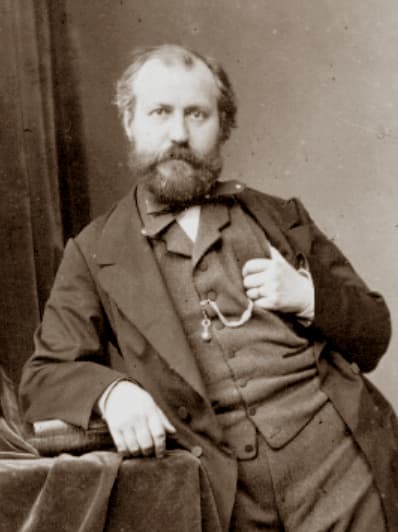
Bayard & Bertall: Charles Gounod, 1860
The addition of ballet music was required for performance at the Paris Opéra. At first, Gounod didn’t want to write it and asked his student, Camille Saint-Saëns, to do it. Saint-Saëns, appalled at the request, went straight to Gounod to change his mind. Gounod finally agreed and created a score that more often had a life separate from the opera.
The ballet section was inserted into the first scene of the final act for the Paris Opéra performance, and that final addition made the former opéra comique a grand opera. It became the most frequently performed opera in Paris.
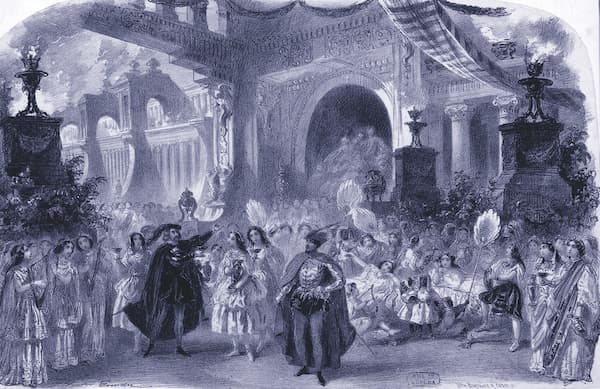
Charles-Antoine Cambon and Victor Coindre: The palace of Méphistophélès, Faust, 1859 (Paris: Bibliothéque national)
At the start of the last act, Méphistophélès and Faust are in the Harz Mountains on Walpurgis Night. An ‘orgiastic ballet’ becomes the focus for the revelry and concludes with Phrynes’s Dance. Phryne was an (in)famous Greek courtesan from the 4th century who was very wealthy. Put on trial for impiety, for profaning the Eleusinian Mysteries, she was acquitted when the jury saw her bare breasts.
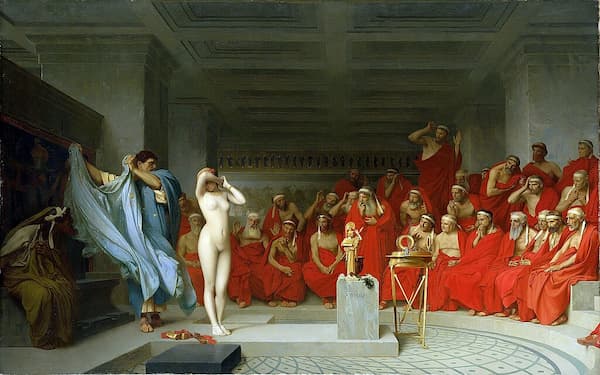
Jean-Léon Gérôme: Phryne before the Areopagus, ca 1861 (Hamburger Kunsthalle)
Other dances in the ballet are by Nubian slaves, Cleopatra, and Trojan Women, all strong and well-known ideals of women that would appeal to Faust. It’s Phryne’s Dance that closes the ballet sequence.
This 1958 recording was made by the Orchestre de l’Association des Concerts Colonne, led by Pierre Dervaux. The Colonne Orchestra was founded in 1873 by the violinist and conductor, Édouard Colonne. Colonne wanted an orchestra that could play contemporary music (Saint-Saëns, Massenet, Charpentier, Fauré, d’Indy, Debussy, Ravel, Widor, Enescu, Dukas, Chabrier, and the like), as well as the big German composers such as Wagner and Richard Strauss.

Pierre Dervaux
Pierre Dervaux (1917–1992) was President and Chief conductor of the Colonne orchestra from 1958 to 1992, starting his career as principal conductor of the Opéra-Comique (1947–53), and the Opéra de Paris (1956–72). He led many of France’s finest orchestras, including the Concerts Pasdeloup (1949–55) and was Musical Director of the Orchestre des Pays de Loire (1971–79) as well as holding similar posts at the Quebec Symphony Orchestra (1968–75), and the Nice Philharmonic (1979–82). He taught at the École Normale de Musique de Paris (1964–86) and the Conservatoire de musique du Québec à Montréal (1965–72).
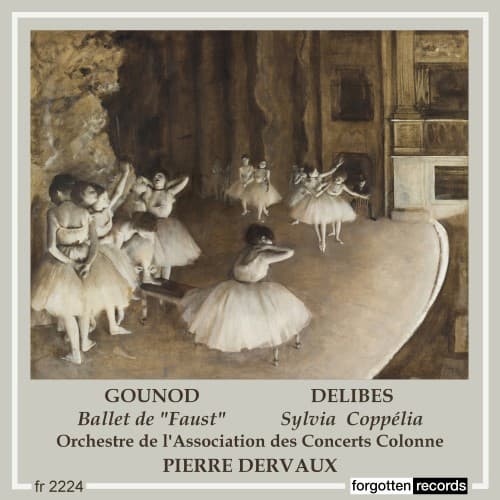
Performed by
Pierre Dervaux
Orchestre de l’Association des Concerts Colonne
Recorded in 1958
Official Website
For more of the best in classical music, sign up for our E-Newsletter
The Quietest Symphony Endings and Why They’re So Special
by Emily E. Hogstad
However, such finales are not, strictly speaking, necessary. Sometimes composers subvert expectations in favour of quieter, more introspective endings.
Such endings are always striking. Today, we’re looking at seven symphonies with quiet finales and the contexts in which they all happen.
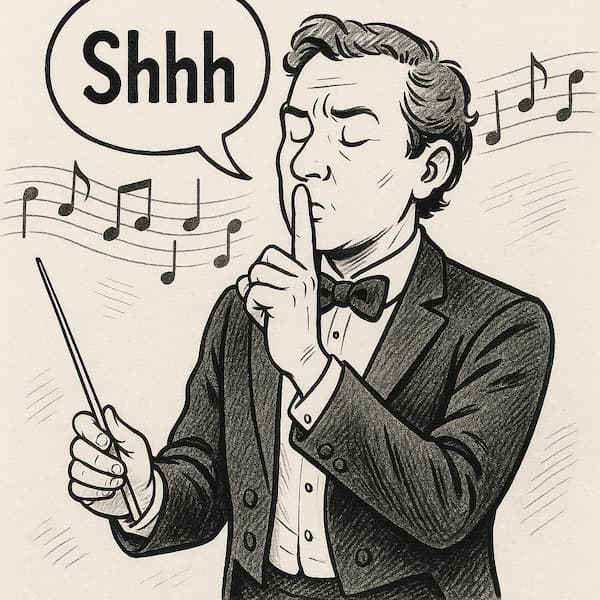
(Image created by Chatgpt)
Beethoven: Symphony No. 6 (1802-1808)
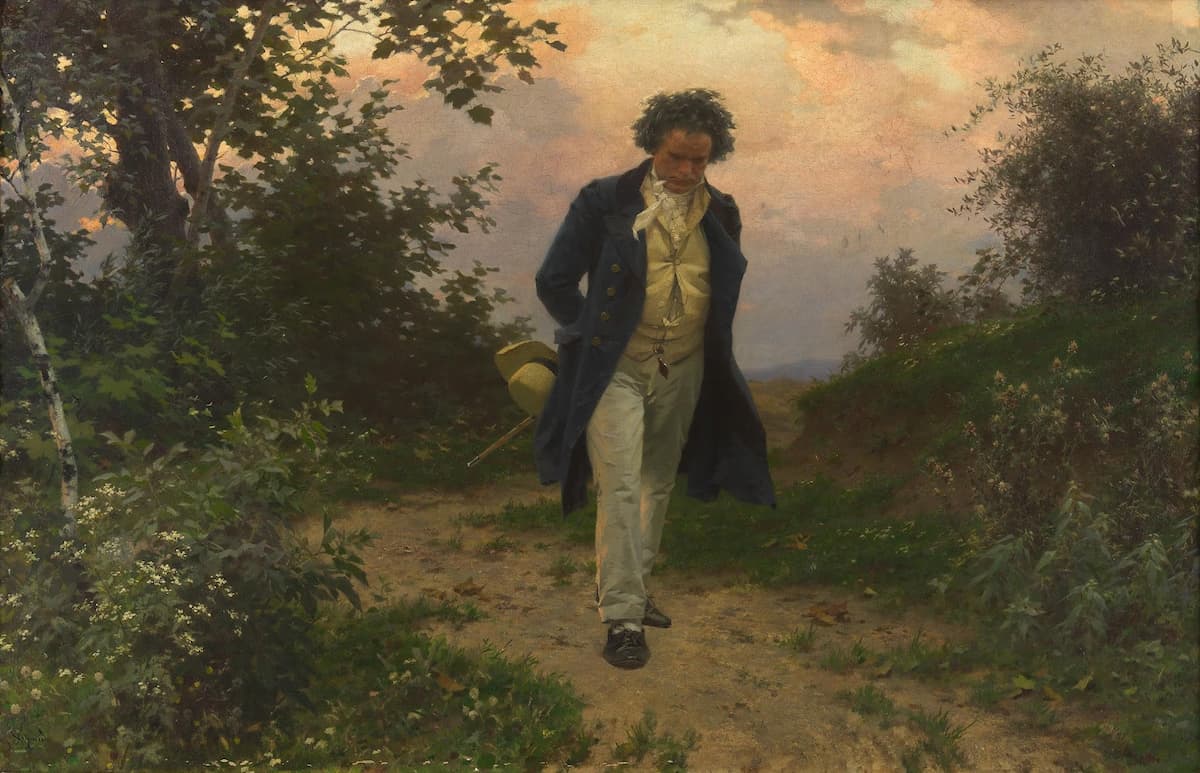
Julius Schmid: Beethoven’s Walk in Nature
Like many writers and composers of his time, Beethoven was deeply inspired by the natural world.
In fact, he was so inspired that in 1802, he decided to write a programmatic symphony containing musical portrayals of natural phenomena like a babbling brook and a rumbling thunderstorm.
To portray his vision, instead of the traditional four movements, this symphony has five.
According to the composer, the first movement portrays a visitor’s joy at arriving in the countryside, the second a bubbling creek, the third a rural dance, the fourth a thunderstorm, and the fifth the song of a shepherd.
At the end of the final movement, the lilting shepherd’s song reappears pianissimo, with elegant filigree adorning it in the strings.
The ending begins around 41:00.
Haydn: Symphony No. 45, “Farewell” (1772)
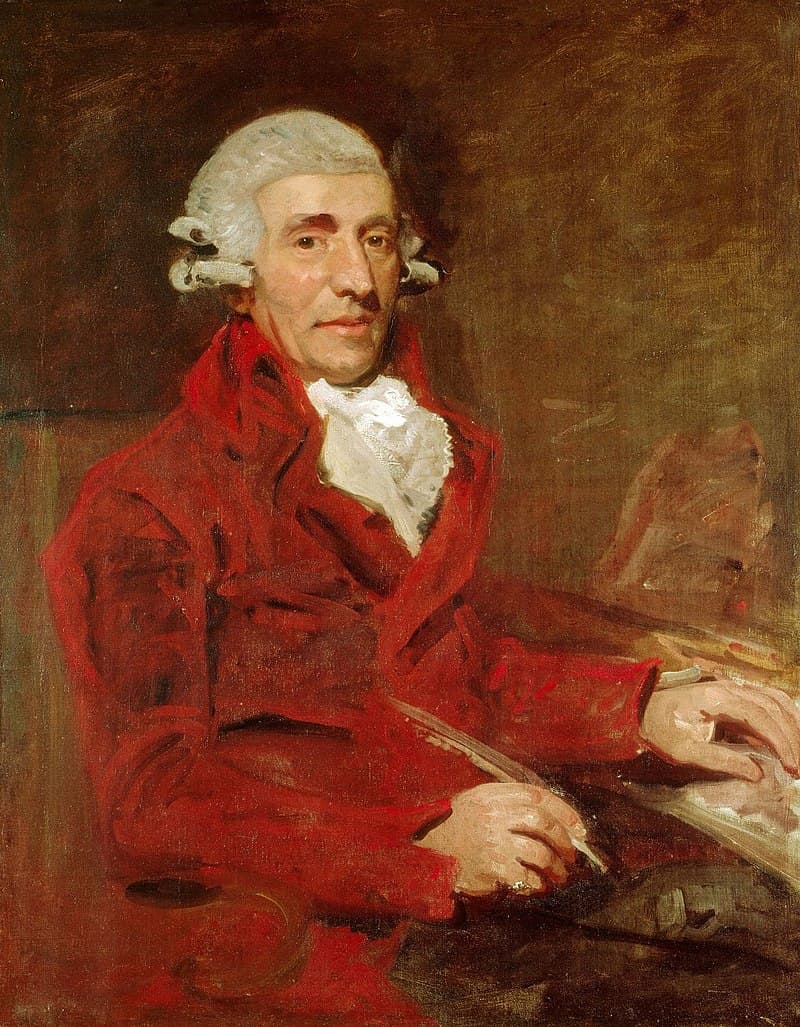
Haydn in London
In 1761, Joseph Haydn began working for the wealthy Esterházy family.
In the summer of 1772, he and his musicians were living and working at the Esterházy palace in rural Hungary.
The musicians were getting restless for summer vacation and desperately wanted to return to their families. So they asked Haydn to use his influence with Prince Esterházy to release them.
Instead of going to the prince directly, Haydn wrote an unusual symphony. This symphony became known as the “Farewell.”
The nickname came about because the score of the final movement instructs the performers to leave the stage one by one until only two violinists are left playing. (One of them would have been Haydn himself.)
Prince Esterházy got the message. The court returned to the city of Eisenstadt the next day.
The ending begins around 23:30.
Sibelius: Symphony No. 4 (1909-11)
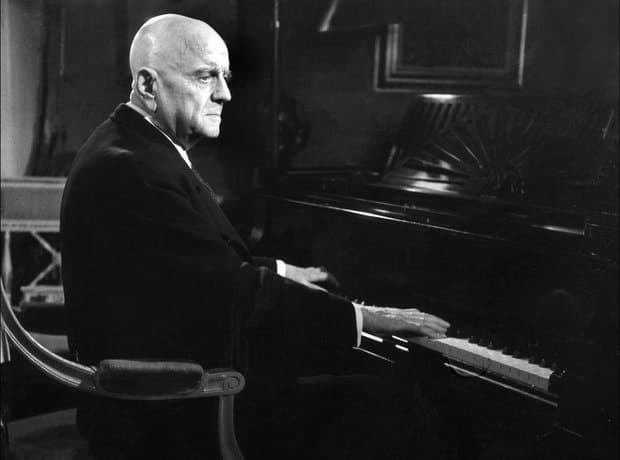
Jean Sibelius
In 1909, Jean Sibelius was struggling with a variety of mental and emotional challenges.
First, he was coming to terms with his alcohol addiction. In 1907, the stress caused by his excessive drinking and partying had landed his beloved wife Aino in a sanatorium.
Around the same time, he had to undergo surgery for throat cancer. He would be terrified for decades to come that the cancer would reappear and kill him.
In addition to dealing with challenges in his personal life, he was metabolising bleak ideas from the broader zeitgeist. His brother was a psychiatrist, and all Europe was talking about Freudian ideas like psychoanalysis (in fact, Sibelius labelled the fourth his “psychoanalytic symphony”). He did not find these ideas particularly comforting.
He also was in contact with colleagues making their careers in cities like Vienna and Paris, and found that he had trouble relating to the avant-garde creative paths they were taking. (Stravinsky, for instance, began working on his cutting-edge Rite of Spring in 1910.)
All of these influences combined heightened Sibelius’s feelings of isolation and triggered an artistic identity crisis. When he finally finished the Fourth, Sibelius wrote to a friend, “It stands as a protest against present-day music.”
It makes perfect sense that during this time, which was difficult personally and professionally, Sibelius looked inward and turned convention on its head.
By the end, absolutely nothing in this work feels resolved. Even the key of the final movement is ambiguous. It is a masterpiece of melancholy understatement.
The ending begins around 32:30.
Brahms: Symphony No. 3 (1883)
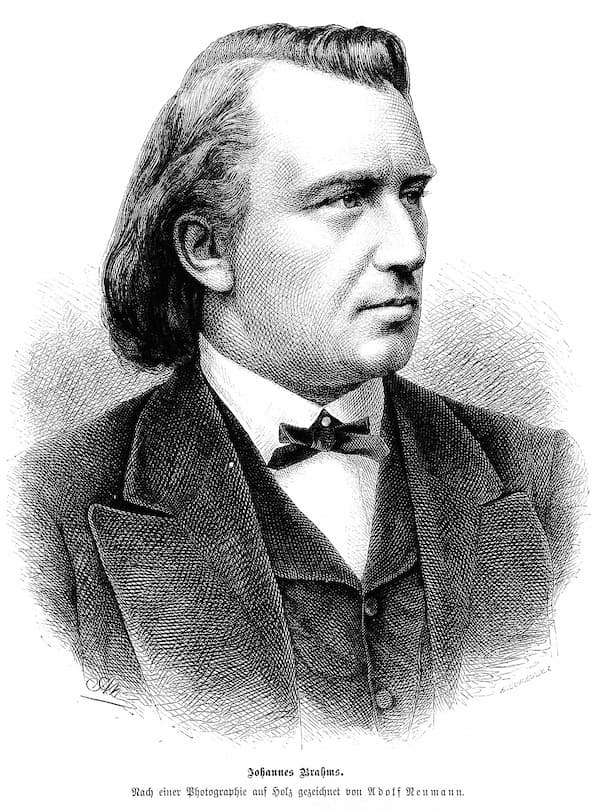
Johannes Brahms, 1880
As a very young man barely out of his teens, Brahms chose as a personal motto the phrase “frei aber froh” (free but happy), which, of course, is abbreviated F.A.F.
Thirty years later, Brahms returned to his motto as inspiration for the theme of his third symphony: the descending main theme of the first movement prominently features the notes F-Ab-F.
From this simple idea, Brahms creates a larger structure that sees the notes repeated in a variety of guises across multiple movements.
Brahms was in love with pianist Clara Schumann for decades. In the end, he decided not to marry her – or anyone else – in order to focus on his work. Perhaps this symphony was partly his coming to terms with the fact that he would never have a partner or children, making the old “free but happy” musical motif a bittersweet one.
Given this background, it’s understandable why Brahms didn’t think a bombastic finale would be appropriate.
Instead, he chose a gentle, bittersweet send-off, repeating the opening motif, but in a dreamy fashion. It sounds like a man finally coming to terms with his life path.
The ending is around 35:00.
Tchaikovsky: Symphony No. 6 (1893)
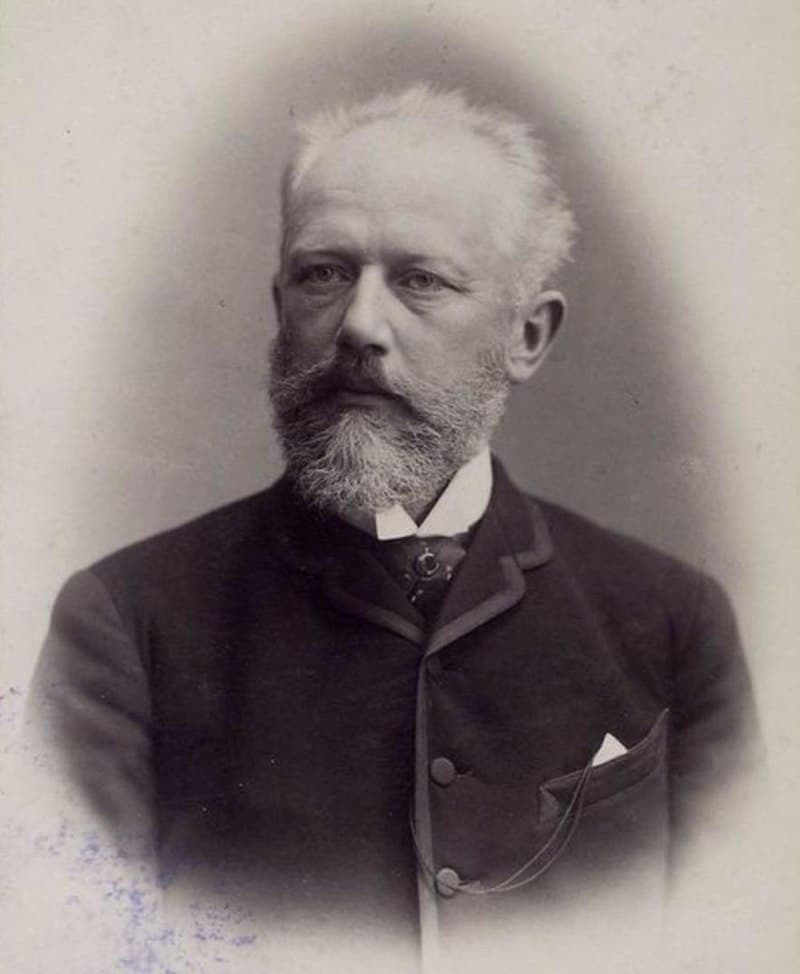
Émile Reutlinger: Pyotr Il’yich Tchaikovsky, 1888
In February 1893, Tchaikovsky wrote to his nephew:
Now, on my journey, the idea of a new symphony came to me, this time one with a programme, but a programme that will be a riddle to everyone. Let them try and solve it … The programme of this symphony is completely saturated with myself and quite often during my journey I cried profusely.
The symphony – his sixth – became known as “The Passionate Symphony” or “Pathetique.”
The symphony seems to come to a close at the end of the third movement. It’s so bombastic that even today, it’s common for audience members to break out in applause after it finishes.
However, there’s still one more movement left to go. It’s marked “Adagio lamentoso”, meaning “lamenting adagio.”
By the end of the movement, the orchestra’s desperate fury is replaced by tragedy. The situation is hopeless. The basses play low pizzicato notes that sound like a slowing heartbeat. The last few measures are marked “ppppp” and the music dies away into silence.
This ending is so unusual that future generations wondered if this was some kind of suicide note…especially since Tchaikovsky died of cholera nine days after he conducted the symphony’s premiere.
The ending is around 48:00.
Brian: Symphony No.1, ”Gothic” (1919-1927)
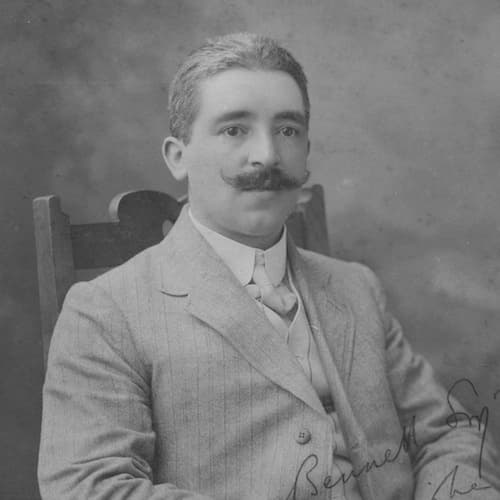
Havergal Brian © Wikipedia
In 1919, British composer Havergal Brian embarked on a massive project: a symphony that would take nearly two hours to perform.
The forces required for a performance of the piece are mind-boggling. Presenters need to hire rarely used instruments, such as the basset horn, thunder machines, chains, rattles, organ, a massive offstage brass section, six sets of timpani, two harps, forty violins, and more.
That’s not even counting the four adult choirs, children’s choir, and four vocal soloists!
All in all, the work has six movements. It attempts to portray the grandeur of the Gothic period, and all of the history made in Europe during that time.
The finale ends with a hushed choral statement consisting of the words “non confundar in aeternum.” This is the ending to the Te Deum: “May I not remain confounded forever.”
The ending is around 1:44:00.
Vaughan Williams: Symphony No. 3, “Pastoral” (1922)
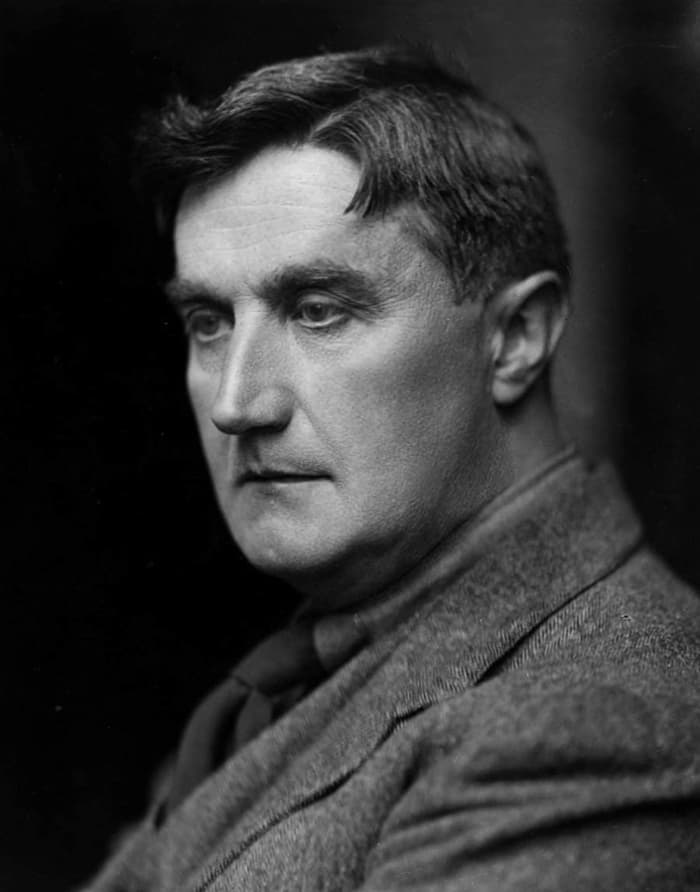
E.O. Hoppé: Vaughan Williams, 1920
In 1922, English composer Ralph Vaughan Williams and his fellow citizens were still coming to terms with the bloodbath of World War I.
Vaughan Williams wrote many works influenced by his experiences as a medical orderly and lieutenant on the front lines. He took inspiration from the pastoral fields he’d seen in France and England, and his longing to imagine them in a time of peace.
In the fourth movement finale, Vaughan Williams introduces a soprano voice to the score. She enters an ethereal way over a quiet timpani roll, singing a wordless song. The lack of words means that listeners can ignore language and focus on the sheer humanity of her voice instead.
She appears again in the work’s final moments, creating one of the most goosebump-inducing quiet endings in the repertoire. She is otherworldly.
The ending is around 26:30.
What Music Did Composers Choose For Their Funerals?
by Emily E. Hogstad
Music is always an important part of any funeral service or memorial service.
The right choice of music can pay tribute to the deceased’s tastes and provide comfort to the mourners left behind.
Have you ever wondered what music the great composers had performed at their funerals? Today, we’re looking at four fascinating composer funerals – and the music that was played at each of them.
George Frederic Handel (1759)
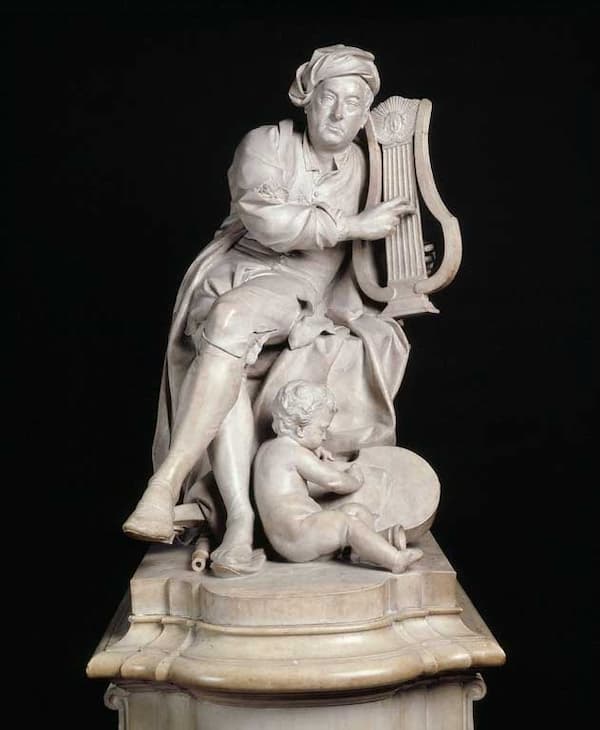
Marble statue of Handel, 1738
In August 1751, sixty-six-year-old composer George Frederic Handel developed a cataract in one eye. His vision began deteriorating, especially after a procedure conducted by a quack surgeon.
By the following year, he was totally blind and no longer able to compose.
He died in 1759. Although he had been born in present-day Germany, he had become a celebrity during his time in England. Accordingly, he was granted the privilege of a state funeral at Westminster Abbey.
He died on 14 April, and his funeral was held on 20 April. The Bishop of Rochester officiated, and over three thousand mourners attended.
Three choirs collaborated on a performance of Funeral Sentences by composer and organist William Croft.
These works have been performed at many famous British funerals since, including Winston Churchhill’s, Princess Diana’s, and Queen Elizabeth II’s.
Wolfgang Amadeus Mozart (1791)
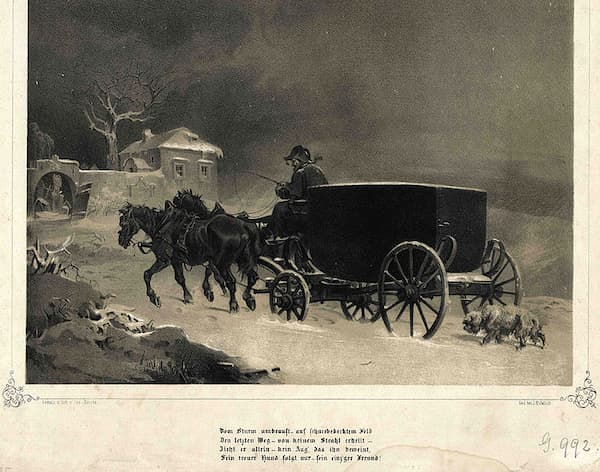
Engraving (1860) representing Mozart’s burial © wordsmusicandstories.wordpress.com
Historians disagree about the cause of Mozart’s death and the length of his health decline during the autumn of 1791.
However, it is known that by 20 November, he was bedridden, in pain, and vomiting.
He died on 5 December at his home, a little after midnight. The Requiem he was working on was left unfinished.
Mozart’s funeral was planned by his friend and patron Baron Gottfried van Swieten. It took place on 10 December at the parish of St. Michael in Vienna.
A portion of his unfinished Requiem was played at the service. The only movement that Mozart had completed and that was ready for performance was the opening “Requiem aeternam” from the Introitus section.
Scores for a few more movements based on sketches were quickly rounded out by Mozart’s student Franz Jacob Freystädtler, who completed the unfinished portions of the remaining movements, such as the Lacrymosa, Sanctus, and Benedictus.
Completion of the other movements was later tackled by another Mozart student named Franz Xaver Süßmayr.
The musicians who performed at Mozart’s funeral volunteered their services to pay tribute to their dead colleague.
Learn more about Mozart’s funeral.
Ludwig van Beethoven (1827)

Beethoven’s funeral as depicted by Franz Xaver Stöber © Wikipedia
By the time of his death in 1827, Beethoven’s health had been deteriorating for years.
Of course, his deafness was his most famous health complaint, but he also struggled with liver failure, pneumonia, and alcohol addiction.
He died in the early evening of March 26.
The funeral was a massive event. It is estimated that between 10,000 and 30,000 mourners lined up on the surrounding streets to pay tribute, or at least catch a glimpse of him.
His pallbearers included composer Johann Nepomuk Hummel, piano pedagogue Carl Czerny, and composer Franz Schubert.
Beethoven had not left specific instructions about what music he wanted to have performed at his funeral. Conductor and composer Ignaz von Seyfried took on the responsibility of providing music for the event.
Seyfried picked out two of Beethoven’s Three Equals, works for trombone ensemble that had been commissioned for All Souls’ Day in 1812. Seyfried rearranged them to include a men’s chorus.
Next he arranged the third movement of Beethoven’s Piano Sonata No. 12, a funeral march, again for trombone and men’s chorus.
He also conducted a “Chorale of the Brethren of Charity” from incidental music for Wilhelm Tell by now-forgotten composer Bernhard Anselm Weber.
To wrap it up, Seyfried offered his own “Libera me”, which quoted Mozart’s Requiem.
The bigger musical tribute came a few days later after the funeral proper at a commemorative performance. There the entire Mozart Requiem was performed in full.
Learn more about Beethoven’s funeral.
Frédéric Chopin (1849)
Pianist and composer Frédéric Chopin had endured severe chronic illness throughout his adult life.
However, during the 1840s, it became clear that his tuberculosis infection was likely going to kill him.
In 1842, he wrote to a friend that he was so sore and fatigued that he was lying in bed for the day.
On 15 October 1849, it became clear that the end was finally near. Musical visitors came and performed for him to provide comfort. He finally died on 17 October.
The funeral took place on 30 October. Chopin’s fame was such that tickets had to be printed for the event. Thousands of people came from around Europe to pay tribute, but only four thousand ticketed mourners were allowed into the Church of the Madeleine.
The music had been carefully chosen by Chopin himself and included Mozart’s Requiem. The archbishop himself had to issue special dispensation to allow women singers to sing in church, as long as they performed behind a black curtain.
Other musical offerings included organ arrangements of his fourth and sixth piano preludes, as well as the funeral march from his Piano Sonata No. 2.
For more of the best in classical music, sign up for our E-Newsletter
Thursday, May 22, 2025
“Sun & Moon” Franco and Denise Laurel
Tuesday, May 20, 2025
Billboard Philippines
From the highly anticipated #AuroraMusicFestival to the exciting #FujiRockFestival, the music scene is getting equally as hot with music festivals popping up all across the continent.
